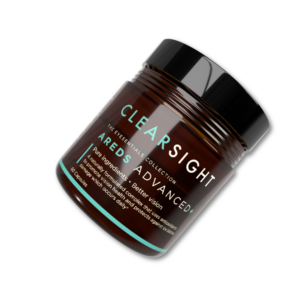Imagine driving at night when suddenly, the world dissolves into a blur of halos around every light. Cataracts, a clouding of the normally clear lens of your eye, can turn simple tasks into daunting challenges. Understanding how this common condition affects night vision is crucial, especially as it’s one of the leading causes of vision impairment worldwide.
Cataracts develop slowly, altering the way you perceive the world, starting with symptoms like blurred vision and increased glare. Dealing with night vision complications brings an additional layer of difficulty, affecting millions and increasing the risk of night-time accidents. Knowing the symptoms is the first step to addressing the issue head-on.
Cataracts are an eye condition that arises when the natural lens of the eye becomes cloudy, impacting one’s ability to see clearly. This clouding is a natural part of aging but can also occur due to other factors affecting a wide range of demographics, including older adults, young children, and even babies.
A common symptom of cataracts is blurry vision, which often worsens over time without treatment. Additionally, cataracts severely impair night vision, leading to difficulty in low-light conditions and poorer quality of life due to challenges in performing daily activities. Those with cataracts frequently experience halos around lights and an increased sensitivity to light, which can lead to discomfort under bright light or during nighttime driving.
Detection and intervention can be as straightforward as visiting an eye care specialist for regular exams. Monitoring cataract progression is critical to prevent substantial vision loss. For some, the solution may be stronger glasses or contact lenses; however, cataract surgery is a common treatment option, which can restore visual acuity and improve daily life substantially.
Common Cataract Symptoms
- Cloudy or blurry vision
- Poor night vision
- Double vision in a single eye
- Sensitivity to light and glare
- Difficulty seeing in dim light
- Need for brighter light for reading and other activities

Cataracts can significantly affect an individual’s vision, with several key symptoms indicating their presence. As the lens of the eye clouds, one may initially notice blurry vision, which is a sign of cataracts. With clarity of sight compromised, both distance and reading vision can be affected, making it challenging to perform everyday activities with the ease once enjoyed.
Following blurry vision, difficulty seeing at night often arises, highlighting yet another common symptom of cataracts. This difficulty can be due to the lens’s cloudiness, diminishing the amount of incoming light and thereby impacting vision in low-light conditions. Seeing colors as faded is not unusual, as the lens discoloration can mute the vibrancy once perceived.
Increased sensitivity to glare is also a notable symptom of cataracts. This can manifest as discomfort in bright light or while driving at night, as oncoming headlights can cause significant glare and discomfort. Adding to the visual disturbance, individuals might experience halos around lights, which can further impair night vision.
Double vision or diplopia in the affected eye may become apparent, detracting from the ability to see a single, sharp image. A frequent need to update prescription glasses can also signal cataracts, indicating a change in the eye’s lens and vision quality.
These symptoms collectively represent an encroachment on the quality of life, potentially limiting freedom and independence if left unchecked. As such, prompt detection and treatment are essential for maintaining vision health.
The vision disturbances caused by cataracts are varied but commonly include an increased sensitivity to light and a gradual onset of blurry vision. Initially subtle, the level of cloudiness in the eye’s lens may slowly escalate, with everyday scenarios becoming a strain. Brighter lights may cause discomfort, producing glare that can be nearly intolerable in severe cases.
Advanced cataracts may present with a yellow or brown tinge that grows more pronounced over time, affecting how colors are seen and further contributing to the degradation of night vision. Tasks that were once simple, such as driving at night or adjusting sight in dim light settings be it at home or when navigating darker streets may become daunting, if not unsafe.
As cataracts mature, the lens’s capacity to focus light sharply onto the retina is compromised, leading to visual acuity’s general decline. Where colors may appear faded or washed out, individuals often notice a dire need for additional light when reading, ensuring that texts or objects can be discerned with greater clarity.
By understanding these symptoms, individuals can be proactive in seeking the guidance of an eye care specialist, aiming to mitigate the impacts of these light-related challenges through appropriate vision aids or surgical intervention.
Night vision troubles stem significantly from the presence of cataracts. As the lens clouds, less light reaches the retina, impairing the ability to see clearly in low-light conditions. Cases of night blindness, where individuals struggle immensely to see in dim lighting, can be indicative of cataracts at a more advanced stage.
Nighttime visual impairments extend further into daily life, with activities such as driving at dusk or during the night potentially becoming problematic. With the increased glare and halos around lights that cataracts can cause, such situations can pose significant risk, often indicating the need for surgical considerations.
Beyond the clouding caused by cataracts, other eye conditions like glaucoma or optic nerve issues can contribute to night vision problems, necessitating comprehensive eye examinations to pinpoint the precise causes. When the decline in night vision becomes noticeable, it can be a sign of the progression of cataracts, prompting a reassessment of lifestyle choices, the need for updated vision correction, or discussions around the benefits of cataract surgery.
Vitamin A deficiency is yet another factor that can lead to night blindness, underlying the importance of a balanced diet alongside regular eye care assessments. While genetic conditions may also factor into night vision issues, early detection and treatment of cataracts remain pivotal to sustaining and enhancing quality of life in the face of dimming sight.

Cataracts are eye conditions that cloud the lens and can lead to impaired vision, particularly in low-light conditions. Diagnosing cataracts starts with a comprehensive eye exam, including tests like visual acuity assessment using an eye chart and tonometry to gauge eye pressure.
During diagnosis, doctors may perform a dilated eye exam to spot cloudy areas on the lens a common symptom of cataracts. Given their impact on everyday activities, such as driving at night, early detection and treatment are essential for maintaining quality of life.
Cataracts, a condition characterized by a clouding of the eye’s natural lens, can severely impair vision, making everyday activities challenging. Patients often report symptoms such as blurry vision, double vision, and poor night vision, including trouble seeing in low-light conditions or dim light. One common symptom is increased sensitivity to light, with halos around lights being troubling for many.
Treatment options for cataracts start with managing the symptoms. This includes using stronger glasses or contact lenses, employing brighter lights at home, or wearing multifocal lenses to enhance visual acuity. However, these measures provide only temporary relief.
The definitive solution is cataract surgery, acclaimed for its high success rate in restoring vision. During this procedure, the cloudy lens is extracted and replaced with a clear artificial intraocular lens (IOL). This surgery can significantly improve quality of life, reinstating clear vision that caters to carrying out daily activities.
After surgery, most individuals notice a dramatic improvement in their vision, which includes better night vision and a reduction in glare. Consulting with an eye care specialist is critical to decide when surgery is appropriate, ensuring that the step taken aligns seamlessly with the patient’s lifestyle and visual needs.

For those living with cataracts, navigating through the night can become a daunting task. The inability to see well in low-light or dark conditions not only hampers independence but can also constitute a safety concern, especially when it comes to tasks such as driving after dusk. As the cloudy lens characteristic of cataracts scatters incoming light, individuals may experience annoying glare and distracting halos around bright lights, complicating night vision further. This scattering can make oncoming headlights blinding and reduce the contrast of the night environment, making it harder to discern obstacles.
Following the life-changing procedure of cataract surgery, patients generally experience a remarkable improvement in vision clarity. However, there are instances where night vision complications persist post-operation. These may be attributed to the eye’s adjustment to the new intraocular lens or the healing process. Should night vision issues continue, engaging with an ophthalmologist is pivotal. These eye care specialists can assess and advise if additional treatment options or adjustments are necessary to manage the condition effectively.
Modifying one’s night-time routine can also be instrumental in managing night vision with cataracts. This might include:
By implementing such strategies, and with the watchful guidance of an ophthalmologist, individuals with cataracts can improve their night vision and handle low-light environments more confidently.
Living with cataracts doesn’t mean resigning oneself to a life blurred by darkness after sunset. There are several practical steps one can take to mitigate the difficulties posed by cataracts in low-light conditions:
Cataract surgery stands as the most effective treatment to reclaim clarity of vision, especially in low-light scenarios. The implementation of a new intraocular lens substantially alleviates visual difficulties, restoring one’s ability to perceive the world with renewed sharpness. This improvement can significantly reduce the glare from lights at night, enhancing both the brightness and the saturation of colors seen in the dark. As every individual’s experience with cataracts and their impact on night vision is unique, it’s essential to consult an eye care specialist to discuss the challenges faced and the best ways to address them. With the right strategies and professional advice, people living with cataracts can better navigate their world, irrespective of the time of day.

Discover the transformative effects of Clearsight AREDS Vision Supplement. Crafted with vital nutrients, it offers protection and improvement for your eyesight, targeting age-related vision problems. Experience enhanced eye health and clearer vision with regular use.
Subscribe to our newsletter for wellness tips, special offers and an instant $10 discount on your first purchase!
Sign Up now and receive 15% off your first order